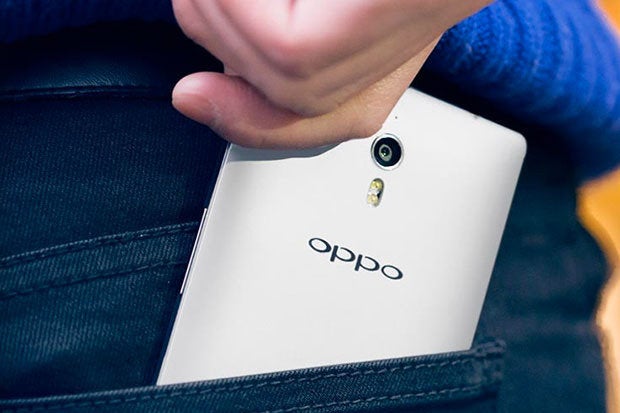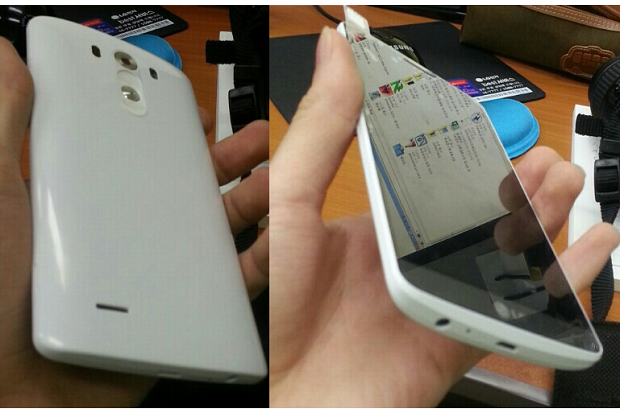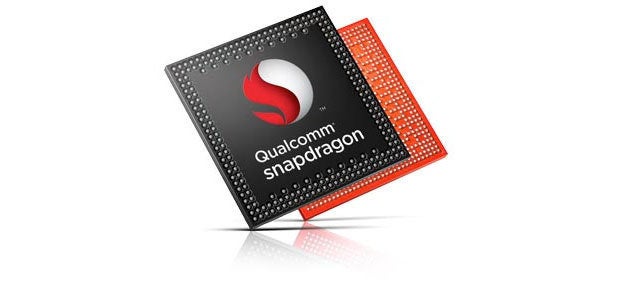Samsung said it’s doing it. Rumors say that is probably doing it. And elsewhere in the world, companies like China-based Oppo are already trying their h at making Quad HD displays a trend with devices like the Find 7.
Those are just a small smattering of the rumors lately suggesting that Quad HD displays are the next “big thing” to come to smartphones. The term Quad HD, or “2K”, refers to a display with four times the pixels of a 720p HD display.* That’s a resolution of 2560×1440. Even on a phone with a huge 5.5-inch display, that’s an astounding 534 pixels per inch (I). On a 5-inch phone, it’s 587 I, which is sort of nuts.
If a 2560×1440 resolution display sounds like a bit of an overkill on a palm-sized device, that’s because it is. Smartphone manufacturers are attempting to sell consumers on adopting something they don’t actually need, but a 2K display will be on your next phone whether you like it or not.
*Technically, 1080p should be called 2K, because it’s 1920 lines of horizontal resolution, which is much closer to 2000 than 2560, right? But that ship has sailed, Quad HD is now commonly referred to as “2K.”
Resolution sells
It’s only been a little more than a year since 1080p displays became the stard display resolution for smartphones, so why the sudden shift to 2K?
DisplaySearch, a research firm dedicated specifically to tracking trends within the display industry, attributes 2K’s uprising to company-manufactured dem. “If you look at the whole ecosystem—the display driver, apps processor, memory interface, display interface—[they’re] all pushing for high-resolution content,” said Tina Teng, a senior analyst.
 Oppo
OppoThe Oppo Find 7 is one of the few phones currently touting its Quad HD abilities.
Indeed, companies like processor-maker Qualcomm have been preparing for 2K’s arrival since it debuted the Snapdragon 800 SoC early last year. “ saw this trend that consumers were going to want better better quality,” said Michelle yden , one of the Senior Directors of eting at Qualcomm. “The SoC is only one part of the phone…How beautiful the images are is critical to users.”
ile it may be true that consumers are looking for a premium video viewing experience, it doesn’t seem critical enough to pack in a higher resolution display when most video is usually highly compressed or streamed over limited bwidth. It’s also doubtful that consumers would stampede to the store to nab a phone with a higher screen resolution, given the number of mid-range to low-end phones still sold around the world.
 Seeko
Seeko haven’t seen it yet, but apparently the forthcoming G3 from will come equipped with a 2K display.
But if companies are successful in making 2K displays a technology worth caring about, 1080p displays may become the stard for cheaper hsets, thus training consumers to constantly yearn for more pixels even when they don’t really make much of a difference.
Teng seemed to agree with me, adding that the proliferation of smartphones, their relatively quick update cycle, contributed to consumers more quickly adopting phones only so that they can be a part of the next big trend. “Ever since Apple started their own smartphone business, the period of software evolution was over. Now you see these manufacturers showing more of the hardware enhancements,” she said. “The [companies] are looking for one or several features to highlight…so that they can focus on marketing that to the consumers.”
Talk about overkill
Qualcomm contends that a 2K display resolution is a vast improvement over mere 1080p screen. “en people see 1080p, they think it looks great. But when you look at it [next to a 2K display], you can really see the difference,” said .
But Dr. Raymond Soneira, esident at DisplayMate Technologies, thinks the movement to get 2K screens on the next batch of flagship devices is coming on rather strong. “Everybody’s been riding on this ‘lets boost the resolution’ every year… I think we’re past the point where this makes visual sense,” he said.
He’s also written extensively about the trend on his own website. Regarding the display on the Samsung Galaxy S5:
The Galaxy S5 has the same 2K 1920×1080 Full HD resolution as the Galaxy S4, which at 432 pixels per inch is higher than can be resolved with normal 20/20 Vision at the typical viewing distances for Smartphones, so the display appears perfectly sharp there is no visual benefit to going higher.
The average consumer won’t be able to see the difference if display resolutions went any higher, even though the picture is a bit sharper on a bigger display. “At 440ppi, you’re already at the limit where people with 20/20 vision just can’t make things out,” continued Dr. Soneira. “Research papers claim people can see the difference between 1000ppi 400ppi, but they’re [wrong].”
There are some advantages to a higher resolution display on a smaller screen, however. “You don’t have to rescale [images],” explained Dr. Soneira. “That keeps the image quality up, you save the energy that you…process to rescale the image.”
As for the speculation that smartphones might someday adopt 4K resolutions (or, as its often referred to, Ultra HD), Dr. Soneira cautioned, “Going up to 4K in principal…makes no sense visually,” he said. “You’d have to hold [your phone] no more than 3 inches away. I don’t really see an objective technical reason for doing it.”
There’s also battery life to figure in, which smartphone manufacturers have been working to optimize since Apple pushed out its first “retina” ione. Devices like the HTC Droid DNA were battery suckers because of their bright, high resolution displays, it’s unclear how each company will deal with having double—or quadruple—the pixels to power. Qualcomm said that it’s included better power management settings in its processors to help with this power shift.

Qualcomm’s Snapdragon 801 SoC can hle up to 2560×2048 display resolutions.
As for whether there is even content that take advantage of the powerful high resolution displays being packed into such small space: “Every step in processing degrades an image,” said Dr. Soneira. “From a streaming perspective, it really makes no sense.”
It’s happening whether you like it not
st as the megapixels on smartphones inevitably crept higher, so will 2K displays eventually become a stard in smartphone technology—though at least a 16 megapixel camera is worth having in your pocket. How quickly it gets here will be determined by whether or not launches its next flagship product with a 2K display later this month, whether the other manufacturers immediately follow suit.
By the end of this year, we’ll likely have 4-6 flagship phones from top-tier manufacturers with Quad HD displays, from there the number will only grow.

















